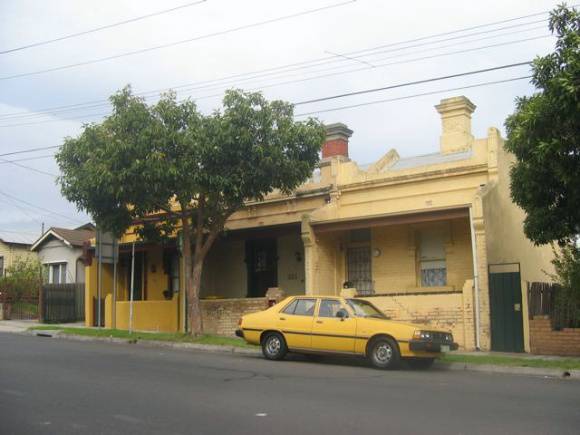| Back to search results » | Back to search page » |
|
BRICKWORKS' TERRACE
Other NameBrickworks' Houses Location227-45 and 259-63 RAGLAN STREET, PRESTON, DAREBIN CITY LevelIncluded in Heritage Overlay |
|
Statement of Significance
What is significant? The houses to the extent of the c.1890 fabric, at 227-45 and 259-63 Raglan Street are significant. This comprises two rows of single storey Victorian era rendered brick terrace houses, which have been painted. Nos. 227-45 comprises ten houses with varying degrees of external integrity. Nos. 259-63 comprise three houses, separated by rendered party walls. They have single double hung sash windows with moulded surrounds and stone lintels and front doors with highlights. The brick and rendered chimneys have moulded caps. The facades have cornices and the centre example has brackets under the cornice. The parapet detailing has been removed. Later additions and/or alterations, including the front fences, are not significant. How is it significant? Why is it significant?
Gottleib Arndt had set up Darebin's first brickworks, with two clay pits in this vicinity in the 1850s. In 1888 the South Preston Patent Brick and Tile Company was formed to take over one of Arndt's claypits, which was situated on the south side of Raglan Street. The sites of these houses were acquired by the South Preston Patent Brick and Tile Company in 1889. These houses were no doubt built for the employees of the South Preston Brick and Tile Co at the same time the brickworks opened in about 1890. Sands & McDougall Directory for 1891 first notes the South Preston Brick and Tile Co in the south side of Raglan Street, flanked by the residences. One of the houses in the block on the east side and nearest the kiln, which was shown as No.4 Raglan Street when numbering commences in 1908, was occupied by Charles Wall, caretaker of the brickworks. Wall was still in residence there in 1910.
The houses at 227-45 and 259-63 Raglan Street, Preston are of local historic significance to Darebin City.
Historically, the houses at 227-45 and 259-63 Raglan Street are significant as representative examples of worker's housing that provide evidence of the important influence of the brickworks industry upon the development of Preston in the late nineteenth century. They are significant for their associations with the South Preston Brick and Tile Company, an important early industry in Darebin. The significance of the place is enhanced by its rarity value as perhaps the only surviving buildings directly associated with the Company and the nineteenth century brickmaking industry in Preston. (AHC criteria A.4, B.2, D.2, H.1)
Group
Residential buildings (private)
Category
Terrace




